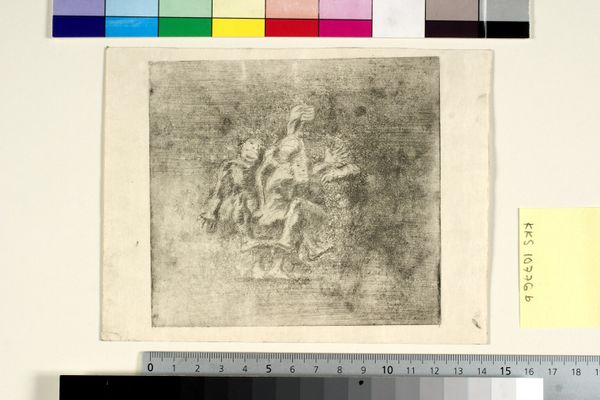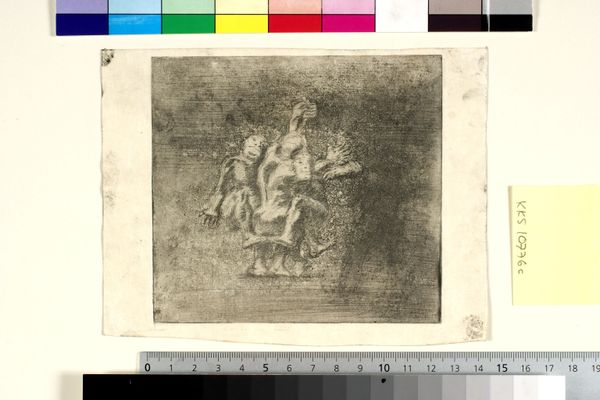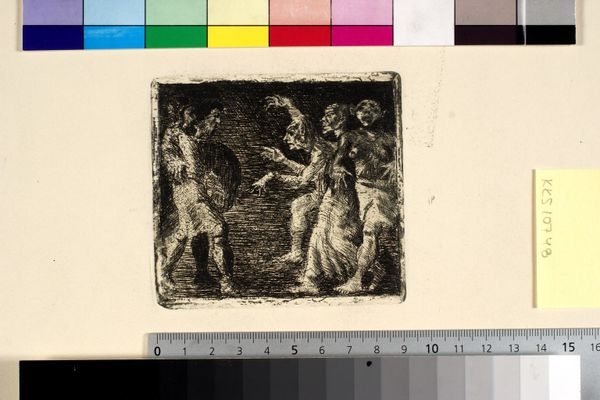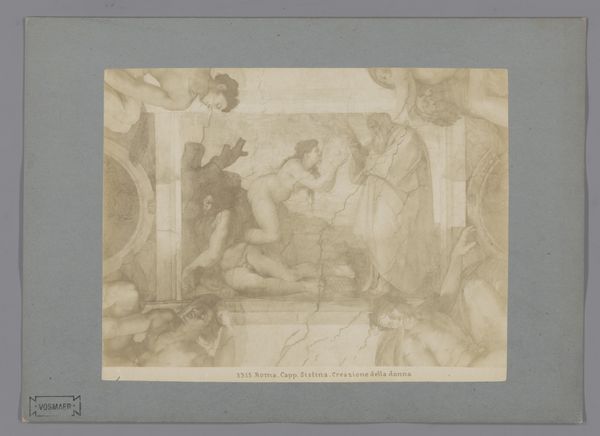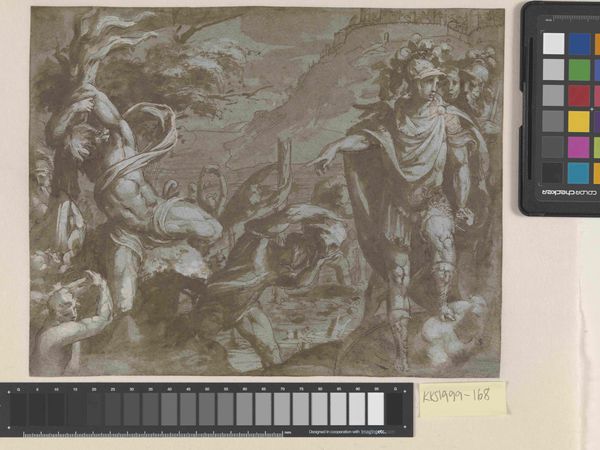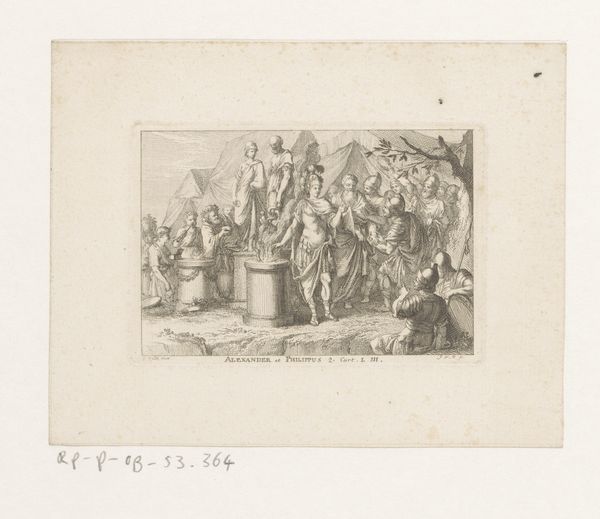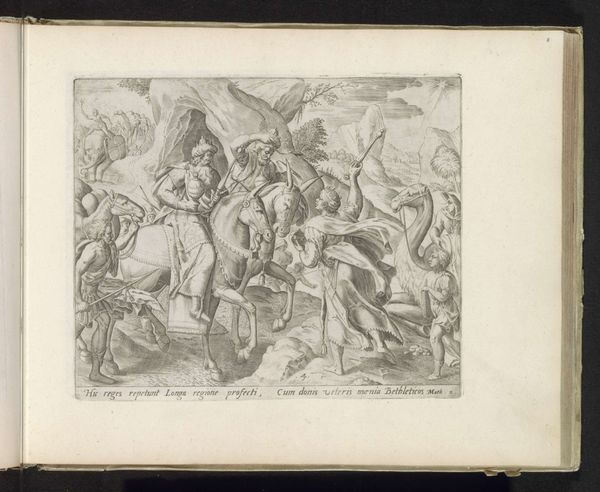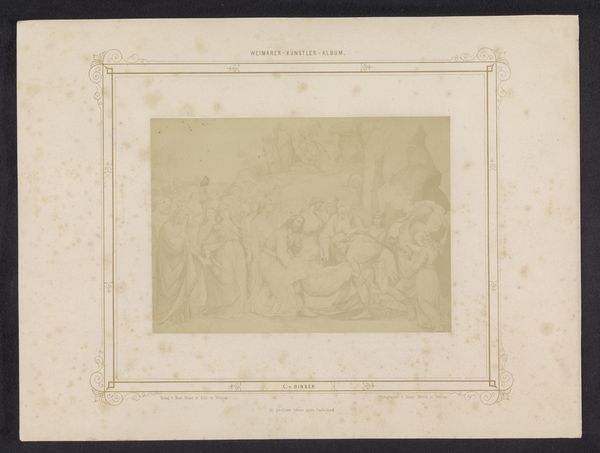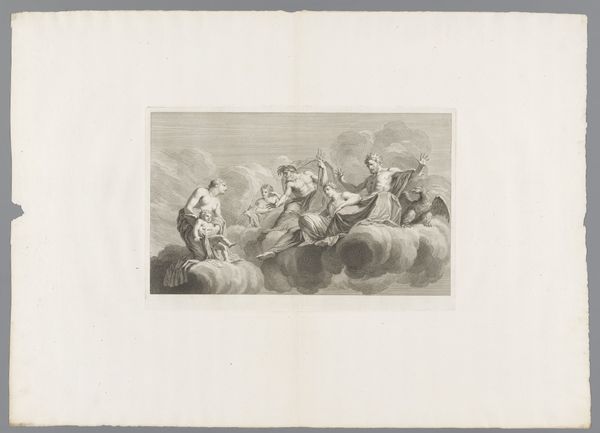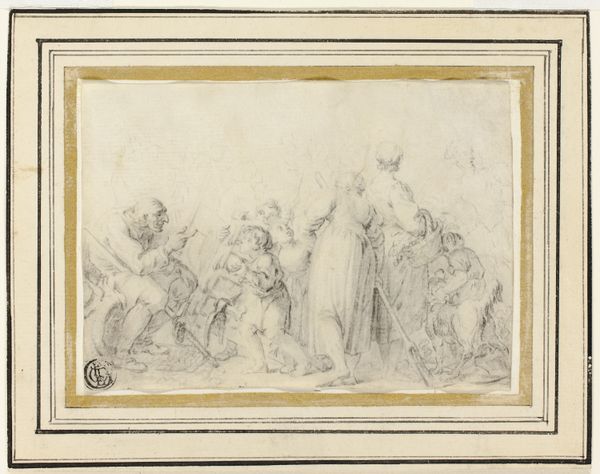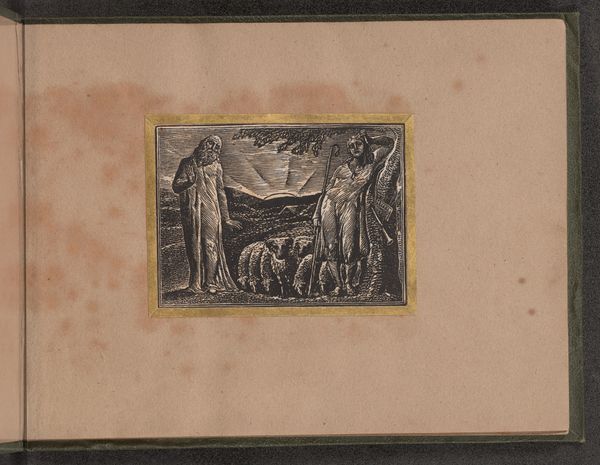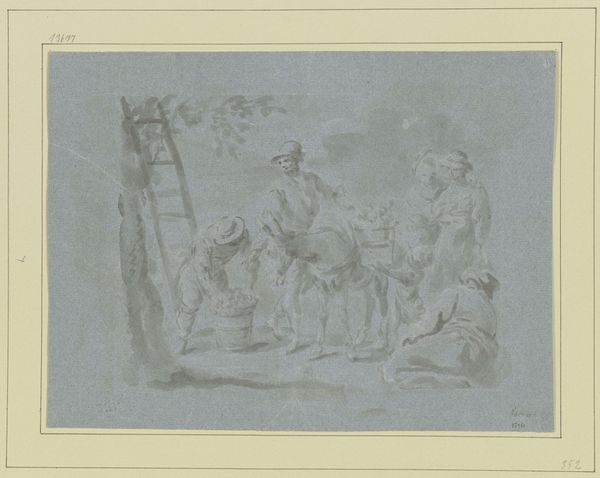
print, etching
#
art-nouveau
#
narrative-art
# print
#
etching
#
figuration
#
line
Dimensions: 111 mm (height) x 123 mm (width) (plademaal)
Editor: Here we have Oluf Hartmann’s etching, “Macbeth og heksene,” or “Macbeth and the Witches,” created in 1908. It has this wonderfully ghostly quality; the lines are so delicate they almost seem to fade into the background. What do you see in this piece, especially concerning its portrayal of women? Curator: The way Hartmann depicts the witches speaks volumes about the socio-political anxieties of his time. Look at how they are rendered: spectral, almost formless, yet possessing a palpable power over Macbeth. It’s interesting to consider this portrayal in the context of burgeoning feminist movements. Are these women empowered figures, or are they, perhaps, cautionary figures representing the perceived dangers of female agency? Editor: That’s a fascinating point. It does seem ambivalent; are we meant to fear them or understand their power as a form of resistance? Curator: Exactly. The witches occupy a liminal space, both within the narrative and within societal perceptions. They embody the “other,” and this etching invites us to interrogate the historical construction of that “other,” particularly concerning women who defied patriarchal norms. Think of how often women labeled as "witches" were, in reality, simply women who held knowledge or power that threatened the established order. How does Hartmann play into—or subvert—that narrative? Editor: So the etching can be viewed as not just an illustration of Shakespeare, but also a commentary on the social anxieties surrounding female power at the beginning of the 20th century. Curator: Precisely. And it’s crucial to analyze how artistic representations, like this one, contributed to shaping those anxieties and, conversely, how they might offer glimpses of subversive potential. It's a powerful example of how art can reflect and even challenge societal norms. Editor: This has completely changed my perspective. I thought it was a straightforward depiction of the play, but I see how much more there is to unpack about gender, power, and social commentary. Curator: That's the beauty of art history, isn't it? There’s always more to discover when we connect artworks to the larger conversations of their time and ours.
Comments
No comments
Be the first to comment and join the conversation on the ultimate creative platform.
